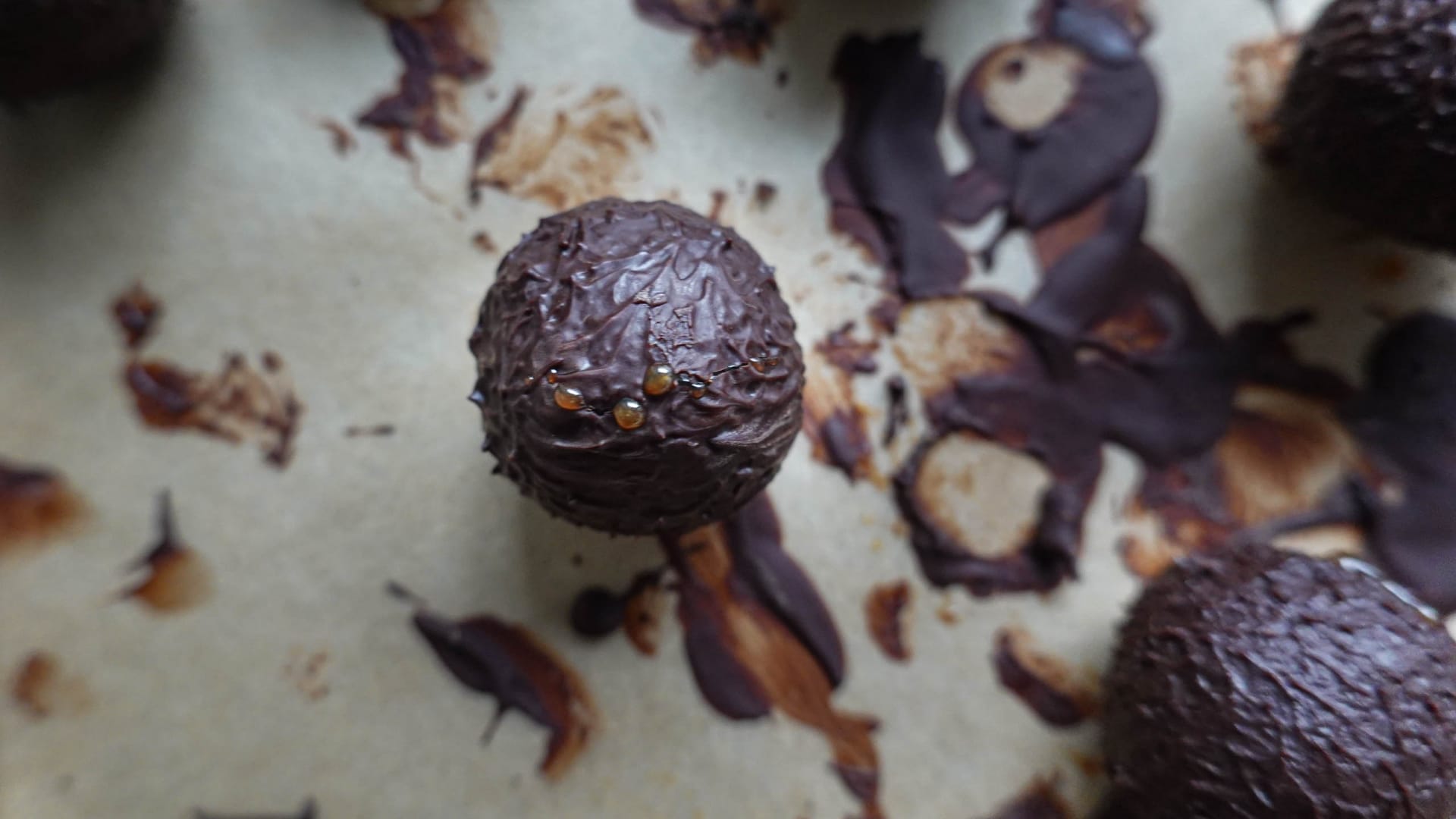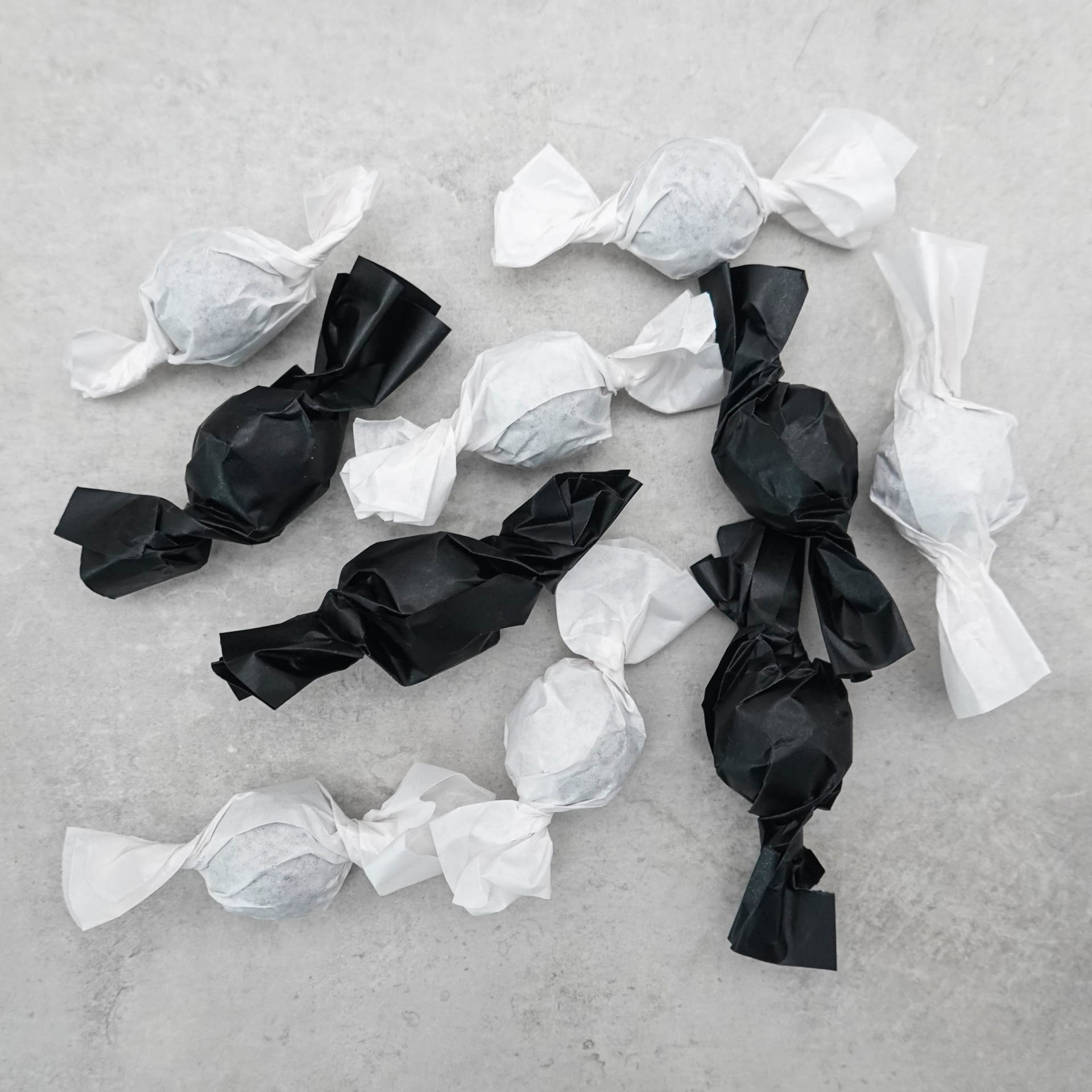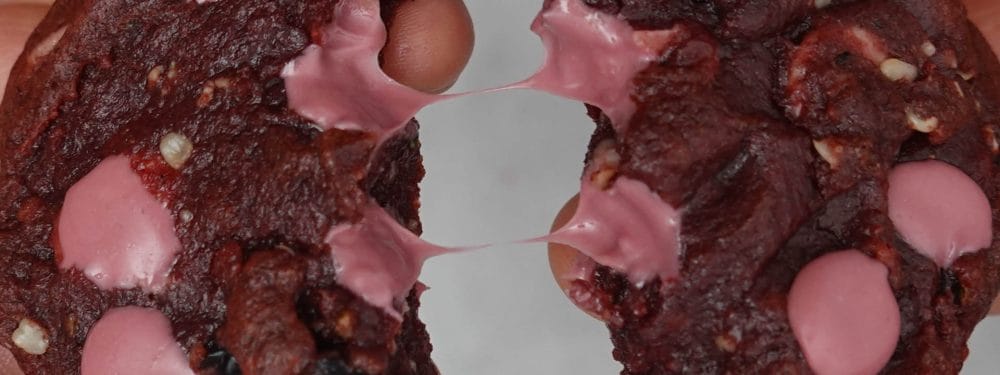Raisin Honey Chocolate Bon Bon
Chocolate raisins are a classic on the candy shelf. Raisin, chocolate coat ready. Not exciting, but still very good. We don’t want to reinvent this classic, so we follow the original but give it a little twist.

We’re all about a signature snack that combines the best of the agency. As ingredients we would have the agency’s own honey and our vines. Chocolate, of course, always goes. This basis is supplemented with knowledge of traditions, but also with the ability to rethink the old. Of course, this applies not only to the content, but also to the packaging.
MILK. – more in it than you think!
But from the beginning. We get raisins that still have some moisture in them. Now, instead of covering individual raisins with chocolate, as is the case with the original, we make a filling that combines the best of raisin and honey in an aromatic-juicy-sweet way. Instead of a rather small raisin, our chocolate bon-bon impresses with a lush filling. With us, there’s just more to it than meets the eye! For this we mix the dried grapes with honey. This creates a sticky-sweet raisin mixture. We enrich the mass with whole raisins and knead by hand. We leave the mixture to rest for 1 hour. A first test showed that the stickiness of the mass decreases when it rests for a while. We add brittle to some of the mixture for a little more bite.

The hollow sphere has it all
We divide the raisin mixture into small portions and roll them in liquid tempered chocolate, then roll them round. In the process, we notice that the chocolate coating does not remain completely tight and that small cracks keep appearing through which the mass presses outward. To prevent this, we use hollow chocolate bodies. We pour the mixture into a piping bag to fill the hollow bodies. Unfortunately, not as easy as expected, because the raisin mixture is very solid. The disposable piping bag burst accordingly quickly.

The raisin mincer – coarse in – fine out
The remedy is a meat grinder. Yes, when chefs move into patisserie…The meat grinder has also been a vegetable sausage grinder for us and now becomes a raisin grinder. The sausage filling horns allow us to easily fill the raisin mixture into the hollow bodies. Who irritates this mixture of meat and chocolate, has not tried a jus with chocolate with game or the Sicilian pastry Mpanatigghi from Modica, which combines veal in a sweet cookie with cocoa powder.
Lice lacquer meets chocolate raisin
We seal the now filled chocolate balls with tempered chocolate. Then we roll the balls individually in chocolate and shape them round again by hand. In the industry, there is a coating kettle for this purpose. This is also available for small food processors. But for our small number of pieces we like to take each ball in our hand and roll it – real handwork. We put the finished rolled balls in a pan with high sides and circle them evenly. We add warm air with a hair dryer to control the roundness of our raisin honey chocolate bon-bon At the same time we get a nice finish. After we have cooled the balls with cold air from the hair dryer, a sealant or lacquer coating is applied to the balls. In the food industry, this coating for coated tablets is usually glucose or shellac E-904. We use shellac. It reminds one of shellac records and some perhaps of lice. In fact, it is a product of excretion of lice, not the lice themselves. However, during the production may well harm lice. It is therefore a natural product, but not vegan. We spray the varnish on the balls and swirl them in the pan with circular movements for about 10 minutes until the varnish is dry. Then the raisin-honey-chocolate bon-bon is ready to eat. Thanks to varnish, nothing melts in the hand, the balls are now quite robust and, unlike classic chocolates, much less sensitive to heat.

For our classic candy with twist, we choose appropriate packaging. Good old wax paper is used for this purpose, kindly provided by the Riepa company. Suitable for MILK. in black and white.
The classic is ready in a new guise.
Packaging design agency with its own food lab
The garment determines our agency’s everyday life, but it is only through the Food Lab that content and packaging come together. After all, packaging design for food would be unthinkable without an increased interest in what we are packaging: food. As simple as it sounds, in reality, artwork briefings are rarely accompanied by true taste samples. We deliberately leave the PC world of PDF briefings to come into direct contact with the food. To that end, we run an in-house food lab where products are decoded and presented for the design team. In this way, the packaging designer should be able to use a deeper understanding of the food for the design.






